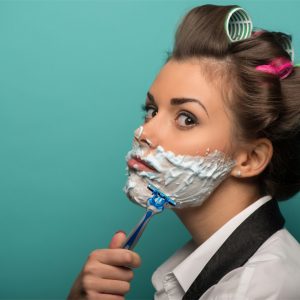
aka Epidermal Leveling or Blading
Dermaplaning is an effective, safe, non-invasive, non-surgical physical exfoliation procedure. It requires the use of a sterile, surgical scalpel to gently “shave” the skin’s surface, removing the top-most layer of dead skin along with fine, vellus hair (aka peach fuzz). We recommend allowing the skin to complete its normal rejuvenation cycle (30 days) which could help prevent peeling post-treatment. It can take less than thirty minutes to perform, with no downtime post-treatment. The procedure generally will remove between two to three weeks of dead skin from the facial area. Dermaplaning is not meant to be used to shape eyebrows, which are made up of “terminal” (not vellus) hairs. Dermaplaning poses no severe side effects, and patients can resume normal activities immediately following treatment.
Contrary to popular belief, vellus hairs, as opposed to terminal hair, will not grow back thicker or darker, it is physiologically impossible. However, dermaplaning is not suitable for those with excessive facial hair. Microdermabrasion, which also physically exfoliates the skin, does not remove vellus hair. Exfoliation of dead cells along with the removal of fine hairs results in healthier, brighter skin that has a smoother look and feel.
Dermaplaning is especially useful on those with dry or rough skin texture and helps to minimize superficial acne scarring or uneven skin tone. It is, also beneficial for mature skin, which tends to have a buildup of dead cells as cellular turnover slows down with age. Dermaplaning is safe for sensitive skin as well as pregnant or lactating clients who cannot have chemical peels (peels penetrate the skin to act at the cellular level, thus are contraindicated).
People who suffer from acne or have excess oil should not have dermaplaning performed because once the hair is removed, the oils may cause bacteria growth which could lead to acne breakouts.
To learn more visit www.premierspaandlasercenter.com.
By using this site, you agree to our Privacy Policy. You can also disable cookies entirely in your browser settings.